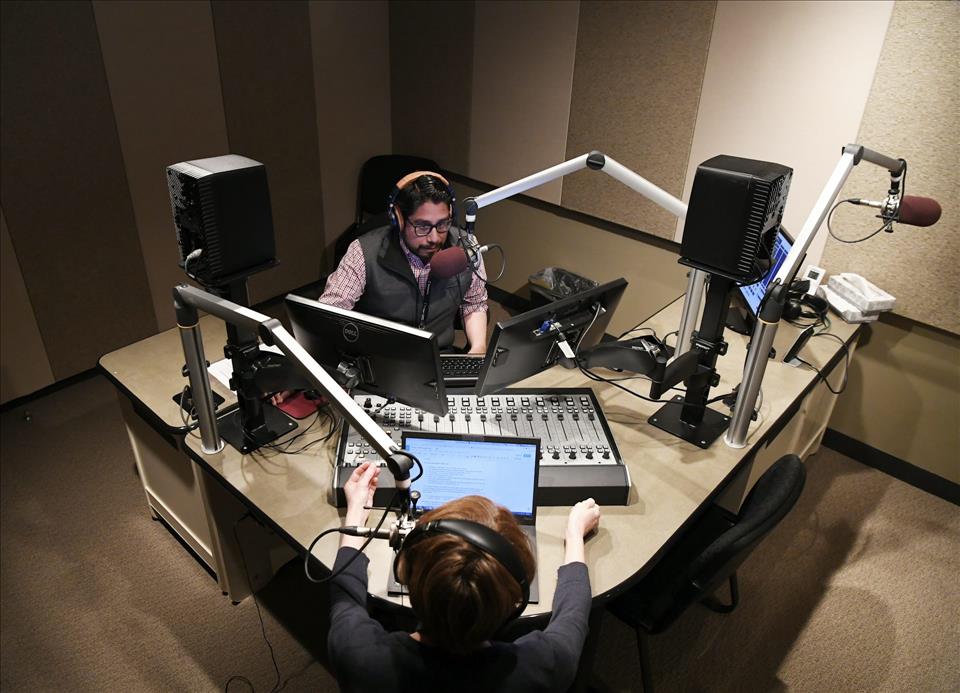Clawback Of $1.1B For PBS And NPR Puts Rural Stations At Risk And Threatens A Vital Source Of Journalism
NPR and PBS provide programming to local public television and radio stations across the country. The impact on them will be direct and indirect.
Both NPR and PBS receive money from the Corporation for Public Broadcasting, an independent nonprofit corporation Congress created in 1967 to receive and distribute federal money to public broadcasters. More than 70% of the money it distributes flows directly to local stations. Some stations get up to half of their budgets from the CPB.
But NPR and PBS get much of their funding from foundation grants, viewers' and listeners' donations, and corporate underwriting. And local public radio and TV stations also get support from an array of sources besides CPB.
“There's nothing more American than PBS,” said the network's CEO, Paula Kerger, at a congressional hearing on March 26, 2025.
Only about 1% of NPR funding, and 15% of PBS funding, comes directly from the government via the CPB. However, once local radio and television stations lose federal funding , they'll be less able to pay NPR and PBS for the programs they produce .
The nearly 1,500 public media stations in the U.S. rely on a mix of NPR, PBS and third-party producer programming, such as American Public Media and PRX , for the programs they offer. Local stations also produce and air regional news and provide emergency broadcasts for the government.
In rural areas with few broadcast stations and spotty cellphone coverage, public broadcast stations are vital sources of information about important community news and updates during emergencies . Federal support is essential for the programming and day-to-day operations of many local stations and allows for the maintenance of equipment and personnel to operate these vital community resources.
We believe that stations in communities that most need them , especially in rural locations , would be hit especially hard because they rely heavily on CPB funding.
Why are Republicans taking this step?Public broadcasting has long been a target of conservative Republicans. They say that with a highly diversified media landscape, the public no longer needs media that is subsidized by federal dollars. They also claim that public broadcasting has a liberal bias and taxpayers should not be required to fund media that slants to the left politically.
Why is public media necessary when there's news on the internet?As journalism revenue has plummeted, public broadcasting has remained a vital source for news in communities across the nation. This is especially true in rural communities , where economic and political pressures have threatened the survival of local journalism.
In addition, with much online news coverage placed behind paywalls , public radio and television plays an important role in making quality journalism available to the American public.
Want crucial information about water systems in your drought-prone community? Public radio station KVMR in Nevada City, Calif., has a program for you. KVMR screenshot Why did Congress approve these funds 2 years ahead?
Public broadcasting has gotten roughly $550 million per year from the federal government in recent years. The CPB has always approved and designated those funds two years in advance , due to a provision in the Public Broadcasting Act of 1967, after Congress has voted to provide that money. The CPB then has distributed that funding primarily through grants to PBS and NPR affiliate stations to support their technical infrastructure, program development and audience research.
What are the consequences for Native communities?Dozens of Native American stations are at risk of closing once the CPB is defunded. Native Public Media , a network of 57 radio stations and four TV stations, is a key source of news and information for tribal communities across the nation and relies on CPB support.
U.S. Sen. Mike Rounds, a South Dakota Republican, publicly stated that he secured an agreement with the White House to move $9.4 million in Interior Department funding to two dozen Native American stations. But there is no provision related to this promise within the legislation.

Legal Disclaimer:
MENAFN provides the
information “as is” without warranty of any kind. We do not accept
any responsibility or liability for the accuracy, content, images,
videos, licenses, completeness, legality, or reliability of the information
contained in this article. If you have any complaints or copyright
issues related to this article, kindly contact the provider above.
Most popular stories
Market Research

- NOVA Collective Invest Showcases Intelligent Trading System7.0 Iterations Led By Brady Rodriguez
- VCUK Launches New Private Equity And Venture Capital Initiative With A Focus On Europe
- From Zero To Crypto Hero In 25 Minutes: Changelly Introduces A Free Gamified Crash Course
- Blackrock Becomes The Second-Largest Shareholder Of Freedom Holding Corp.
- Cartesian Launches First Outsourced Middle-Back-Office Offering For Digital Asset Funds
- Ethereum Based Meme Coin Pepeto Presale Past $6.7 Million As Exchange Demo Launches




















Comments
No comment